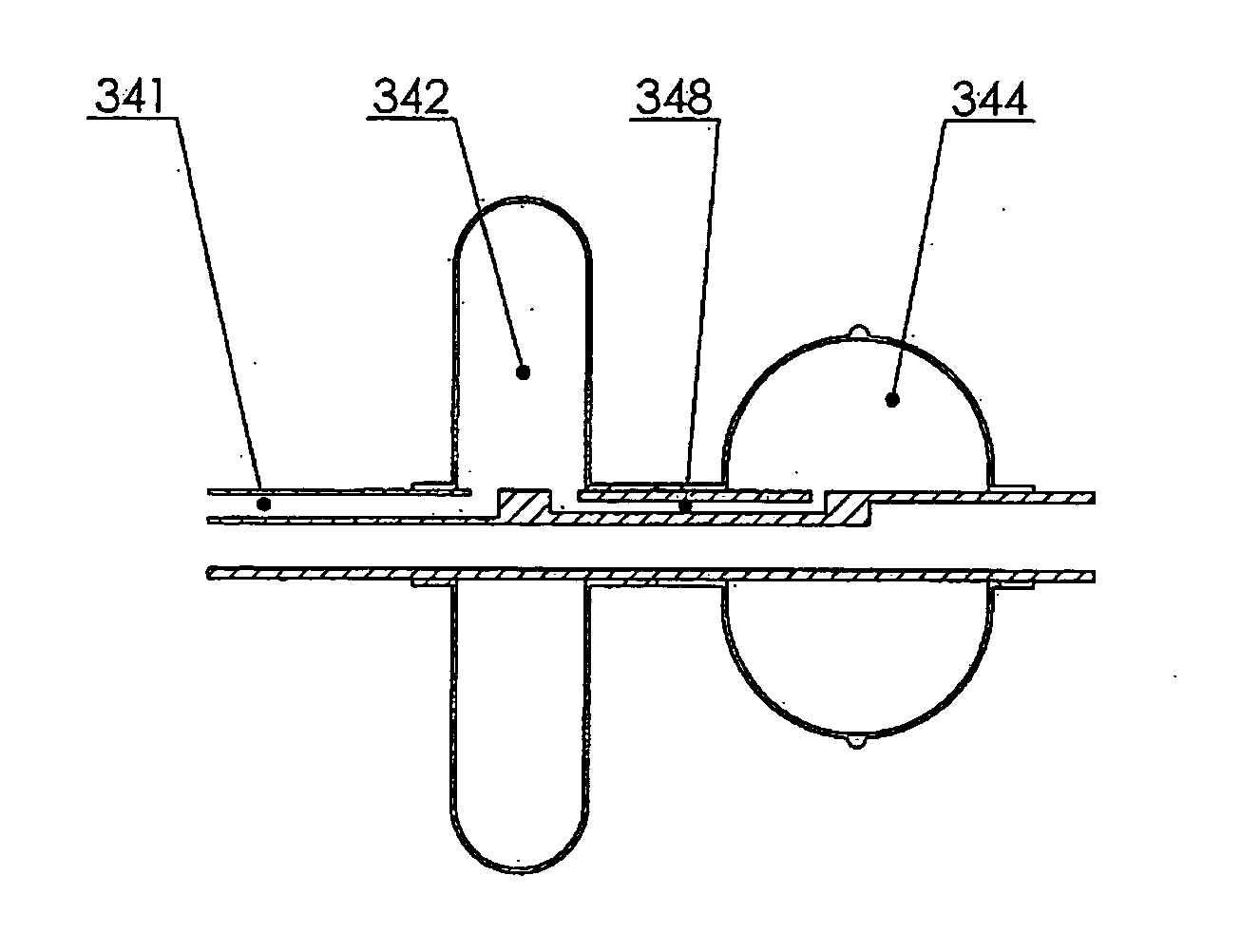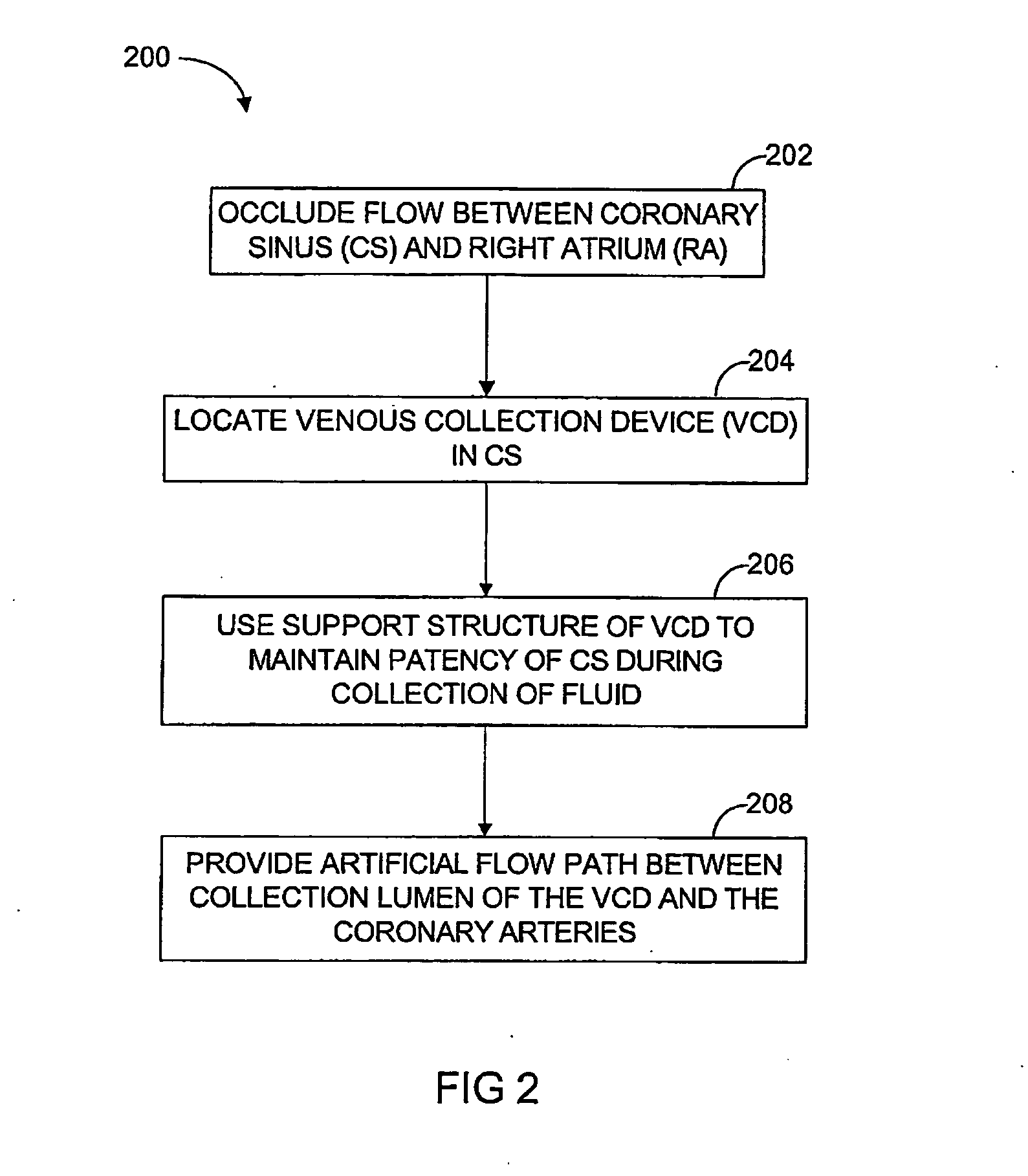Isolating cardiac circulation
a technology of cardiac circulation and isolating agents, which is applied in the field of cardiac circulation isolating agents, can solve the problems of destroying the therapeutic activity of the active agent, affecting so as to achieve the effect of maintaining the patency of the coronary sinus
- Summary
- Abstract
- Description
- Claims
- Application Information
AI Technical Summary
Benefits of technology
Problems solved by technology
Method used
Image
Examples
example 1
Substantial Isolation of Coronary Circulation from Systemic Circulation
[0071] The isolating cardiac circulation device was used to deliver a dye (ICG) to the heart, with the results shown in FIG. 5. Blood samples were taken from the oxygenated and non-oxygenated sides of the circuit, the pulmonary artery (which would indicate leakage from the coronary sinus, CS) and the aorta (indicating leakage at the coronary arteries). As shown in FIG. 5 there is a high concentration of the dye maintained over the period of recirculation with little or no dye leakage into either the pulmonary artery or aorta. There may be some degree of dye uptake by the myocytes themselves, which would explain the reduction in the dye concentration within the circuit at time 10 min.
example 2
Delivery of a Therapeutic Agent to the Heart Using a Coronary Recirculation Technique
[0072] The graph in FIG. 6 represents the administration of an agent for the treatment of heart failure delivered using cardiac recirculation or direct coronary injection over 10 minutes. The agent was delivered once a model of heart failure was achieved (baseline), follow up in the animals was six weeks later, represented in FIG. 6 as the change from baseline. The data shown is fractional shortening (FS), a standard echocardiographic measure of the ability of the heart to contract. It will be noted that there is an improvement in FS in the animals that had the agent delivered with the recirculation device that was not achieved in those animals that received the same agent (at twice the dose administered via recirculation) by intra-coronary infusion alone. These data indicate that at lower doses / concentrations of an efficacious agent, the recirculation device confers greater therapeutic benefit in ...
PUM
| Property | Measurement | Unit |
|---|---|---|
| pressure | aaaaa | aaaaa |
| pressure | aaaaa | aaaaa |
| support structure | aaaaa | aaaaa |
Abstract
Description
Claims
Application Information
 Login to View More
Login to View More - R&D
- Intellectual Property
- Life Sciences
- Materials
- Tech Scout
- Unparalleled Data Quality
- Higher Quality Content
- 60% Fewer Hallucinations
Browse by: Latest US Patents, China's latest patents, Technical Efficacy Thesaurus, Application Domain, Technology Topic, Popular Technical Reports.
© 2025 PatSnap. All rights reserved.Legal|Privacy policy|Modern Slavery Act Transparency Statement|Sitemap|About US| Contact US: help@patsnap.com



